With the failure of the No.4 Bergmann 1896 to attract military interest (which couldn’t have been too difficult to predict), Bergmann and Schmeisser realized that the straight blowback mechanism of the 1896 model pistol would never allow for a sufficiently powerful cartridge. The solution was to redesign the pistol to use a locked breech system, which would allow it to handle the higher pressure required for a military cartridge. This redesign came in 1897 with the No.5 pistol and cartridge.
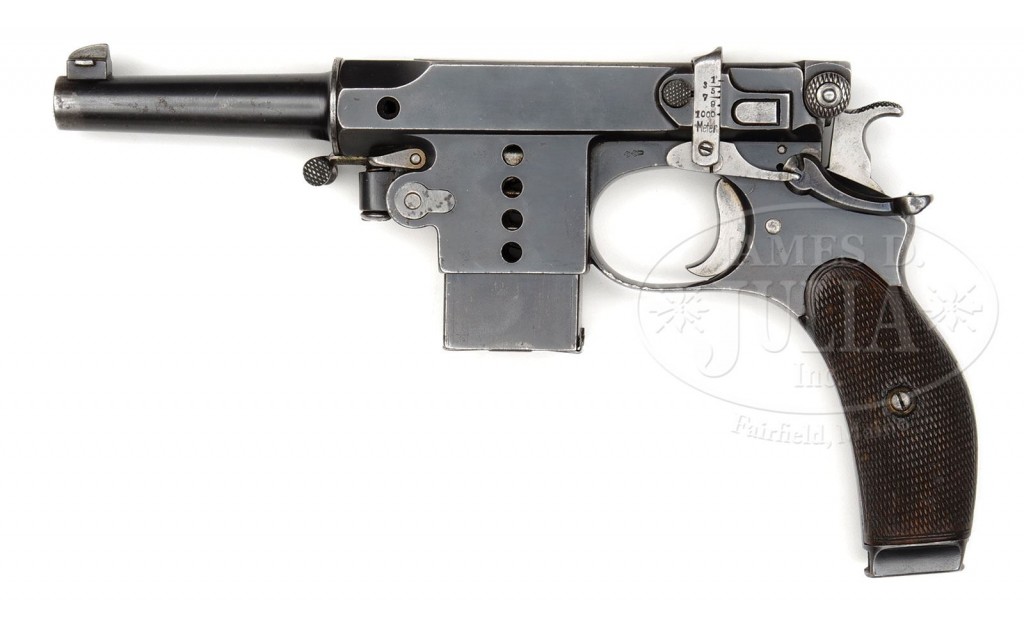
First, let’s look at the cartridge. It was called the 7.8mm Bergmann, although it actually used the exact same size bullet as the 7.63mm Mauser of the newly-available C96 Mauser pistol. Like the Mauser round, the 7.8mm Bergmann was a bottlenecked cartridge. It propelled an 85 grain bullet at about 1300 fps (400 m/s) – very similar performance to the 7.63mm Mauser. The two rounds are very similar in appearance, although they can be distinguished by the longer neck of the Bergmann (this also prevents them from being interchangeable).
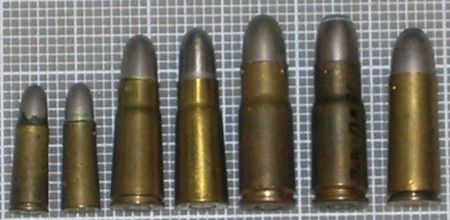
The locking system designed for the 1897 Bergmann was one of the few ever made using a laterally-pivoting bolt (another is the Czech ZH-29 rifle). The bolt had a pair of 3mm deep locking lugs on the left side of the bolt, and a flat spring on the right side to keep them engaged in the matching cutouts in the side of the barrel extension. Upon firing, the bolt and barrel would remain locked together and move backwards about 6mm. At this point a camming surface on the rear locking lug would force the bolt to the right, unlocking it from the barrel extension. The barrel would then stop, and the bolt would travel the remaining distance back under inertia. The empty case would be ejected, a new round fed from the magazine, and the bolt would lock back up with the barrel extension and both would return to their fully forward position. In other words, it was a standard short-recoil mechanism, with the detail of the bolt moving laterally to lock, instead of the more typical vertical movement.
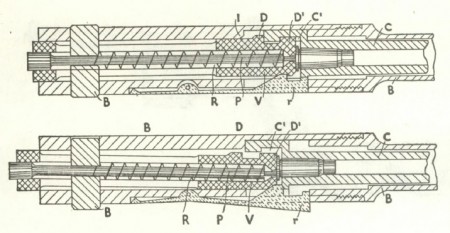
The magazine was also redesigned in the 1897 model Bergmann, with the 5-round Mannlicher-type clip finally replaced by a conventional double-stack, double-feed box magazine. The standard magazine would hold ten cartridges (although other capacities are sometimes found), and was provided with a set of witness holes on each side so the shooter could see how many rounds were remaining. Of course, the magazine well would cover these holes, so matching sets were drilled in both sides of the magwell. The magazine could be reloaded via stripper clip while in the pistol, or exchanged for a second pre-loaded magazine.
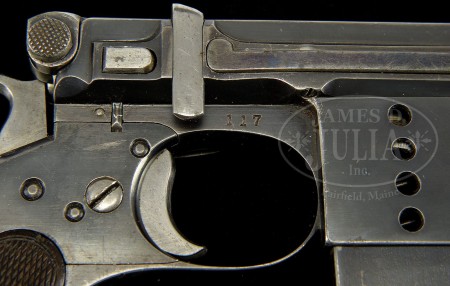
The Bergmann 1897 pattern was tested by at least two nations for military use – Switzerland and England. The Swiss did their testing informally in 1897 and 1898, and appear to have found the gun too fragile or temperamental for service use. The British (who did not test it until 1902) thought the gun had potential, but they wanted a larger and heavier bullet weight than Bergmann could provide (something that would be equivalent to the .455 Webley round).
Shoulder stocks were again offered with the 1897 No.5 pistols. While this was an option apparently seldom chosen by buyers of 1896 model guns, it was expected to be common enough on the 1897 that I believe all of them were made with stock mounting slots in the grips (such attachment slots were made specially on 1896 models only when the gun was to be sold with a stock). As was typical of the era, the shoulder stock doubled as a holster.
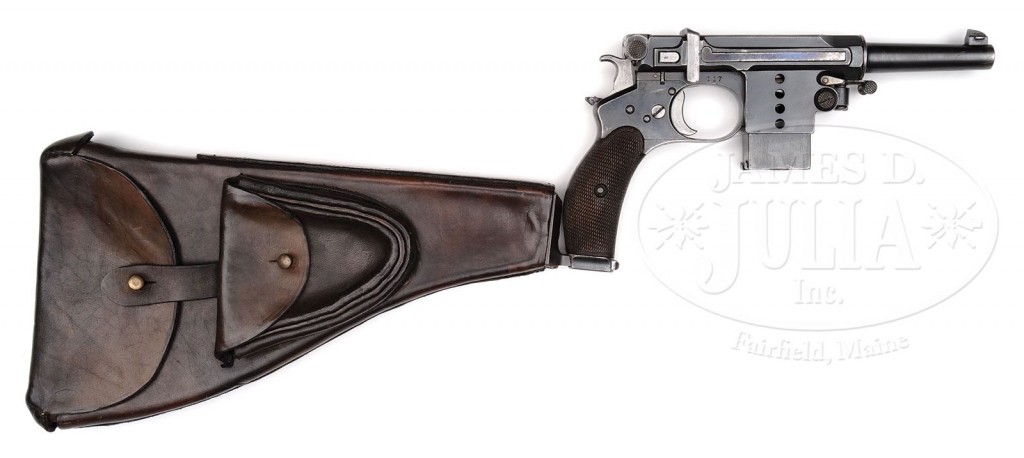
One other new feature to the 1897 was a rear sight adjustable for range. Again like the other selfloading pistols of the day, the sight was calibrated out to a very optimistic 1000 meters (with additional markings at 100, 300, 500, 700, and 900 meters). The inside surface of the sight had machined notches matching these range markings, and a spring loaded button just ahead of the sight allowed it to be adjusted without slipping or moving when fired.
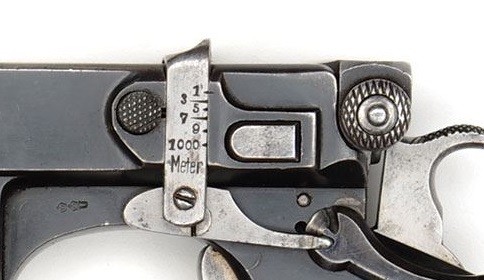
Elements that remained the same as the earlier 1896 and 1894 designs included the overall layout, disassembly process, simple single-action trigger mechanism, exposed hammer, sliding dust cover over the ejection port, and manual safety lever on the right rear of the frame.

In all, about 800 No.5 Bergmann pistols were manufactured. They failed to attract any serious military interest, and most were sold on the commercial market.
Prototypes
We have photos of two prototype, non-standard No.5 Bergmann pistols. The first comes from Reinhart and am Rhyn, and is a pistol that was sent to Switzerland for trials:
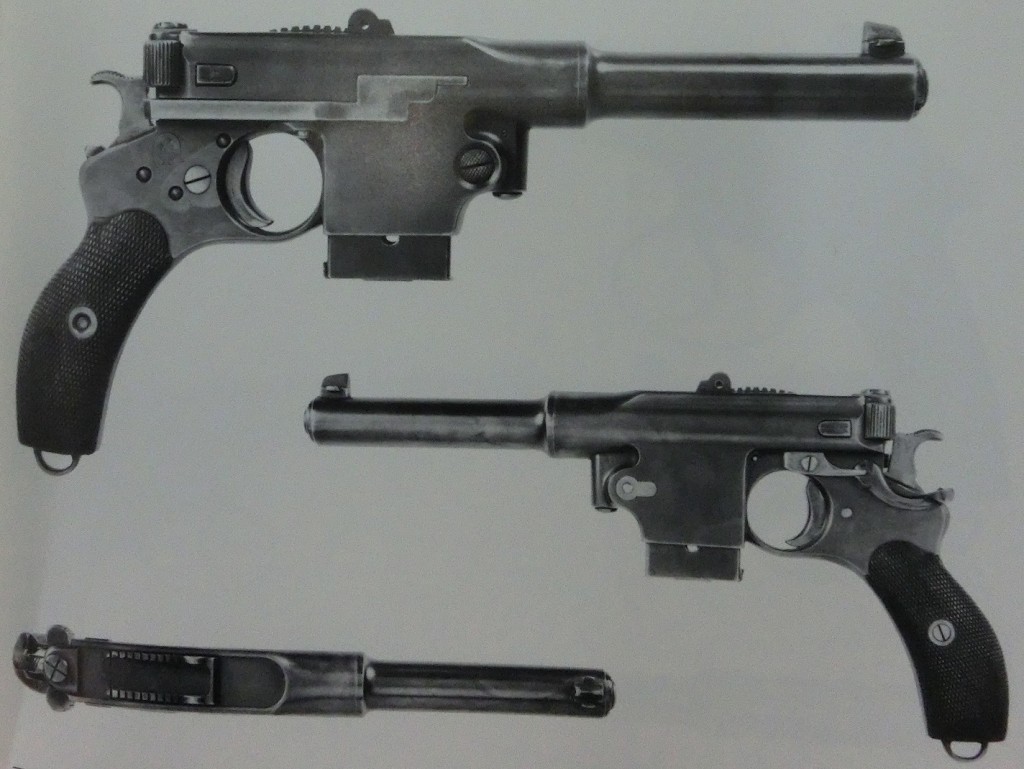
This pistol includes several feature distinct from the standard No.5 pistol. It has a full-length barrel shroud, and a tangent style rear sight (the actual tangent blade of which is missing). These are changes that are understandable from a Swiss military perspective, although the gun failed to win them over even with those elements.
Second, we have photos from James Julia of a prototype No.5 pistol sold from the Sturgess collection. This one bears a lot of resemblance to the 1896 pattern, has no serial number, and appears to be an experimental transition model.
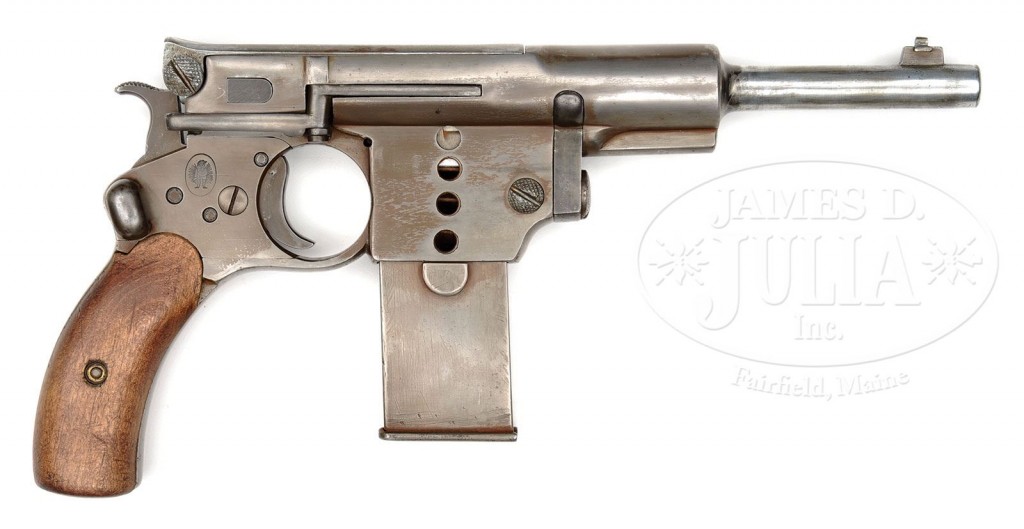
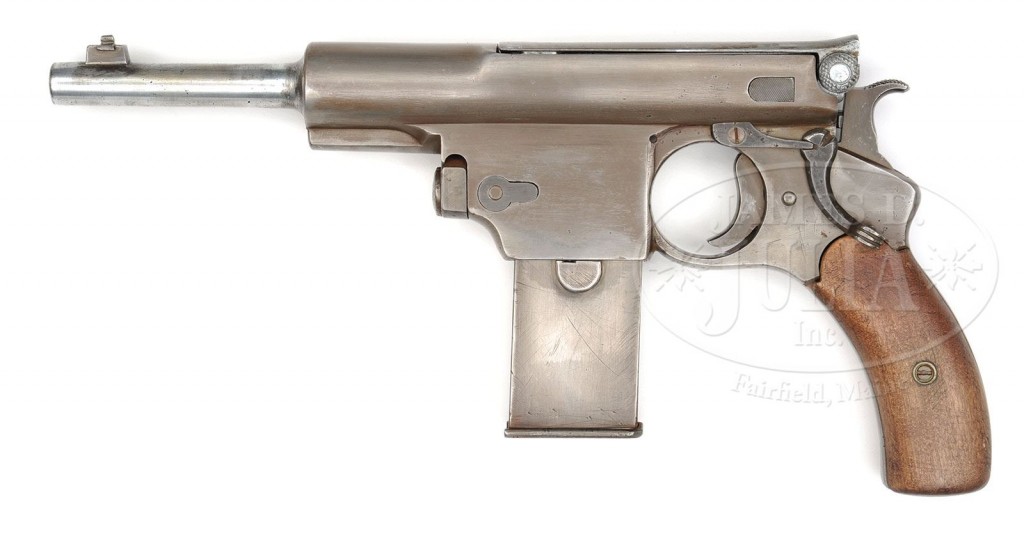
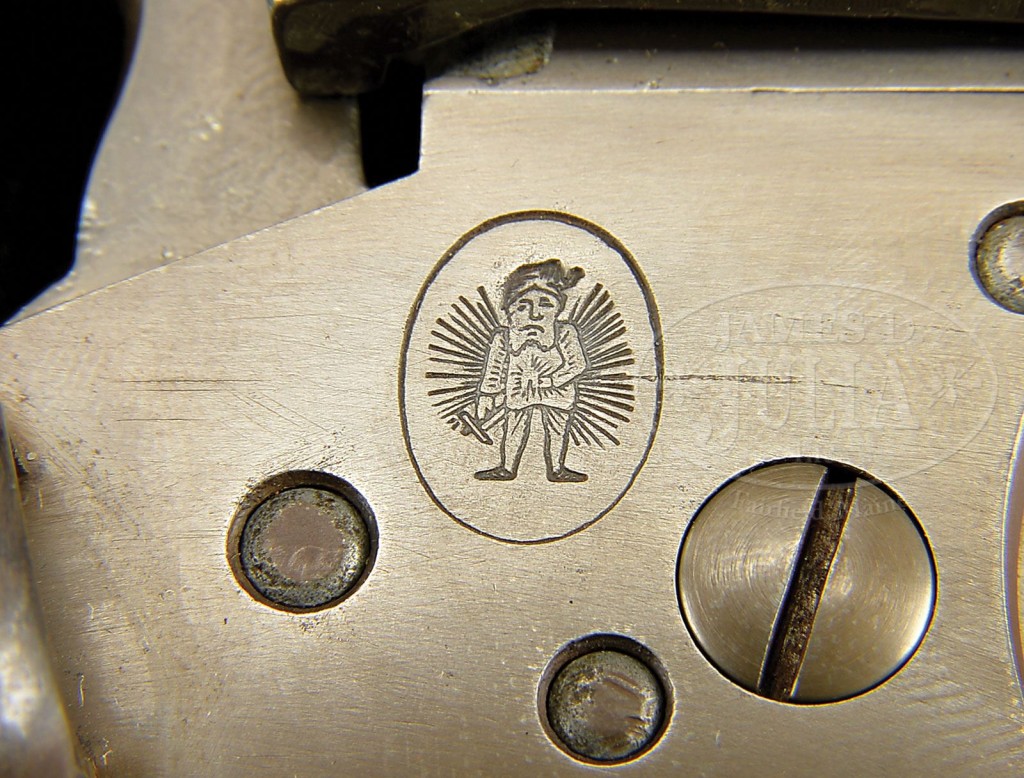

Technical Specs
Caliber: 7.8x25mm Bergmann
Bullet Weight: 85 grains
Muzzle Velocity: 1300 fps (400 m/s)
Magazine Capacity: 10 rounds
Barrel Length: varies, typically 3.5-5.25 in (89-133mm)
Action: Short Recoil
Locking System: Laterally moving bolt, 2 locking lugs
Patents
Great Britain Patent No. 17,251 – October 9, 1897
References
Ezell, Edward C. Handguns of the World. Stackpole Books, New York, 1981.
Reinhart, Christian and am Rhyn, Michael. Fastfeuerwaffen II.
Wilson, R.K. Textbook of Automatic Pistols. Samworth, 1934 (reprinted by Wolfe Publishing, Prescott AZ, 1990).

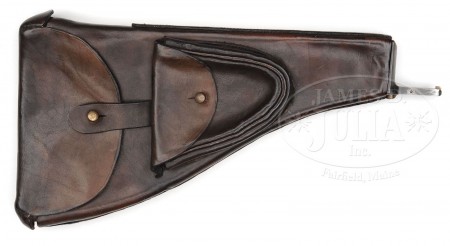
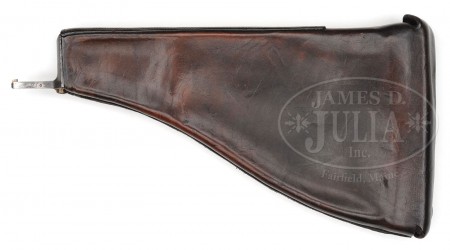
I just got one of these in H3VR and well, I had to research it. I was astounded at the cartridge being so much like 7.63 Mauser!
Very nice
hi ian
say i have really enjoyed your videos over the years . say would this number 5 pistol be considered the first military semi automatic ?
also iam, curious as the price range of these pistols. are and is it true that only 50 othese #5
pistols were made ?
thank you ian